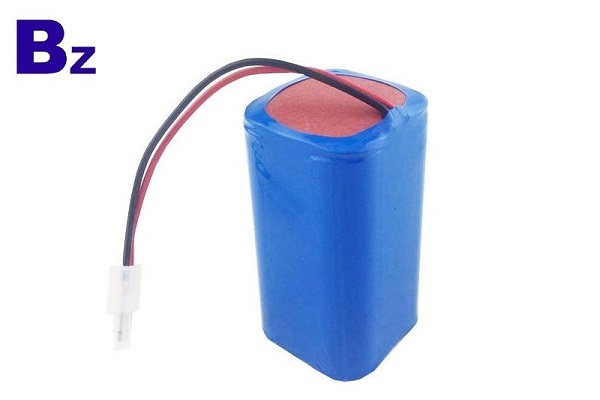With the increasing global pollution, energy conservation and environmental protection have become the topics advocated by various circles. Many energy-saving and environmentally-friendly products have been developed on the market. In the battery market, lithium batteries are a supernova. With their safety, light weight, long service life, complete charge and discharge, low maintenance costs, and no memory effects, they have quickly occupied the market and gradually replaced traditional lead-acid. Batteries, of course, an important feature of lithium batteries is energy saving and environmental protection.
China's lithium battery industry is developing very rapidly and is being used more and more widely. It can be said that our scientific and technological life is inseparable from lithium batteries. Most of the batteries in the market today are 18650 lithium batteries. Compared with traditional lead-acid batteries, lithium batteries have the characteristics of high open circuit voltage, low self-discharge, high discharge rate, wide operating temperature range, fast charging speed, no memory effect, and no pollution.
So, Will the lithium battery be damaged if left unused for a long time? The answer is: yes!
New batteries that have never been used: Under normal circumstances, the factory standard charge of the lithium battery pack is 30%-40%. For example: 18650 14.8V 2200mAh battery pack, the factory capacity is about 600-900mAh. However, the cells of the lithium battery pack will discharge themselves, which is what we usually call leakage.

There are many electronic components on the protection board of the battery pack. IC, MOS, capacitors, resistors, etc. themselves will continuously consume electricity, plus the self-discharge of the battery cells (all rechargeable batteries have lithium batteries, polymer Batteries, lithium iron phosphate batteries, and nickel-metal hydride batteries are all the same.) Although these self-discharges are very small, such as tens of microamps / hour, they are almost negligible during normal use, but if they are not used for a long time, the It is not a small calculation, it can be tens of microamperes an hour, and it can reach 1-2 mA in one day.
In this case, taking a 14.8V 2200mAh battery as an example, the capacity of about 600-700mAh from 30% of the factory is completely drained in more than a year. If the battery is assembled on the product, then some electronics Components may leak faster and take less time. When the power of the lithium battery pack is completely exposed to dryness, the battery diaphragm paper is completely dry and the electrolyte is completely "0", it cannot be activated at all, and it cannot be recharged. Some customers may say, is n’t it much better to fully charge the battery when you leave the factory? For this problem, it ’s really much better, but it ’s very unsafe if the battery is full. So the industry standard is charged 30% power.
Battery been Used: When the battery pack is discharged to be protected, that is, the state of power is basically discharged (in fact, there is only a little power left). Under normal use, when the lithium battery pack discharges to the protection voltage, the protection board automatically closes. At this time, the lithium battery pack's power is almost exhausted, but some of the remaining power is about 5%. Under normal circumstances, it will be charged. Sometimes, it's okay to forget about recharging after a few days. Basically, recharging after one month or a half months, the problem is not big. But in this case, if you leave it for three or four months without charging it, it will almost be scrapped.
In response to these problems, as long as you do the following:
First: If the new battery has never been used, please do not leave it for too long. Especially if the new battery has not been used, don't store the new battery for four or five months. If you can’t use it in time, remember to recharge the battery!
Second: If the battery has been shipped, you need to indicate it to the customer in the product manual. If the new product is not charged for a long time, the battery will fail. If it is used under normal conditions, it should be charged in time when the battery runs out. Otherwise the battery will fail.


